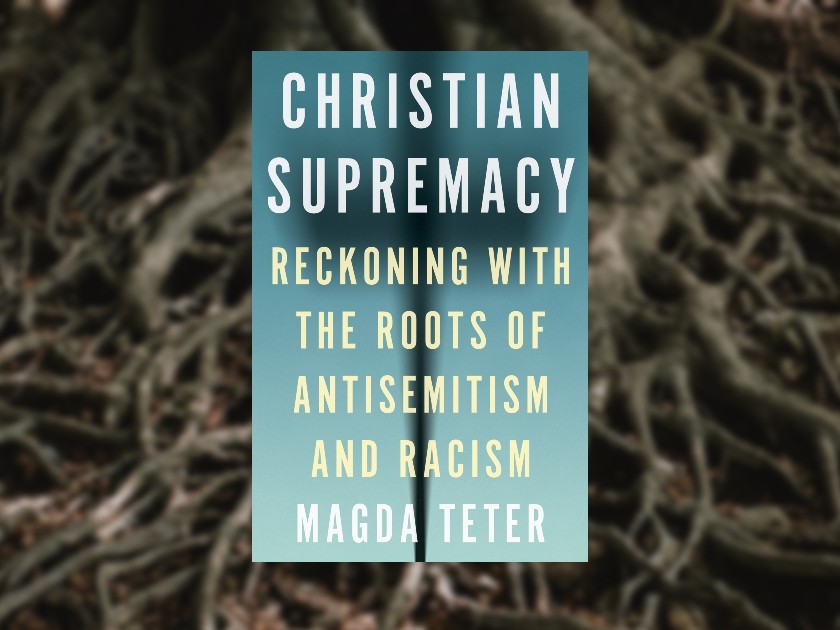
Background photo by Matteo Grando on Unsplash
Enduring Marks of Inferiority
On August 11th and 12th, 2017, white supremacists, as the Washington Post reported, “mostly young white males,” gathered in Charlottesville, VA, for the Unite the Right rally ostensibly to protest the removal of the statue of a confederate general Robert E. Lee by the City of Charlottesville and the renaming of the park in which the statue stood as “The Emancipation Park.” The rally attracted hundreds of white protesters and a diverse group of counter-protesters, each representing different — and clashing — visions of American society and polity. On the evening of August 11th, the white supremacists marched through the University of Virginia, torches in hand, chanting “Blood and soil!” “You will not replace us!” “Jews will not replace us!” and “White Lives Matter,” with some donning medieval Christian symbols. The next day the events turned violent. A white supremacist drove into the crowd of counter-protesters, killed Heather Heyer, and injured nineteen others, while still many others were physically attacked and beaten.
The events in Charlottesville mixed antisemitism and anti-Black racism — a characteristic of the so-called “white supremacist” or “white nationalist” groups. But what has been, until recently, often missing from the coverage and description of these groups is that they represent a distinctly white Christian supremacy, which has far deeper roots than modern racism and modern antisemitism.
Two sharply contrasting visions of a state were colliding in Charlottesville — one embracing multicultural equal citizenship another ethnonational white Christian identity. Both emerged in the western world in the aftermath of the American and French Revolutions, but their roots run deeper. Until the late eighteenth century, European society, which included colonies, had been organized around social estates and legal pluralism — the concept of equality before law did not exist. With the Enlightenment ideas about equality and rights began to be debated and following the American and French Revolutions conceptualization of what citizenship and nationhood started to take shape. In Europe, two dominant ideas of citizenship and nationhood emerged: one, rooted in a political national identity, gradually and grudgingly included all those who inhabited a political state; the other, grounded in an ethnic, or ethnoreligious, identity, tended to exclude people who were not considered part of a given ethnic group. In some European states these ideas clashed, sometimes violently. In the US, similar debates about equality before law and about belonging emerged, but only a little later, as the country began to wrestle with the legal meaning of the phrase “We, the People” in the preamble to the US Constitution and the ideals of equality contained in this document and in the Declaration of Independence. But those debates were grounded in ideas about race and color.
The events in Charlottesville mixed antisemitism and anti-Black racism — a characteristic of the so-called “white supremacist” or “white nationalist” groups.
But while modern antisemitism and modern racism are indeed, as George M. Fredrickson has argued, the outgrowth of processes associated with modernity, and while, indeed “white supremacy attained its fullest ideological and institutional development” in the US between 1890s and 1950s, in South Africa in the twentieth century, and in Nazi Germany, the ideology espoused by white supremacists in the US and in Europe is rooted in Christian ideas of social and religious hierarchy, which developed, gradually, first in the Mediterranean and Europe in respect to Jews and then in respect to people of color in European colonies and in the US, before returning transformed back to Europe. That vision of social hierarchy is built on the foundations of early Christian supersessionist theology that negated Judaism as it claimed to “replace” it, and is hence sometimes called replacement theology or replacement theory. Ancient and medieval Christians developed a sense of superiority over Jews, whom they saw as carnal and inferior, and rejected by God. Christians, they asserted, were now the new Israel, a new chosen people, spiritual and superior. For Christians, Jews became necessary “contrast figures” created and used to validate Christians claims of theological replacement and superiority.
The modern rejection of equality of both Jews and Black people in the West is the legacy of Christian supersessionism, a theological concept developed in antiquity and implemented in law and policy when Christianity became a political power — its fruit Christianity’s claim to superiority and dominance. Scholars of antisemitism and racism have frequently focused on theology and culture, gesturing only slightly, and sometimes not at all, toward the role law has played in that history. But, as Ian Haney López has argued in the context of American law, law “transforms” ideas into “lived reality,” law “reifies” them. When that theological understanding of the relations between Jew/Judaism and Christians/Christianity became implemented into law, that relation transformed into Christian supremacy.
Magda Teter is professor of history and the Shvidler Chair in Judaic Studies at Fordham University. She is the author of Blood Libel: On the Trail of an Antisemitic Myth, which won a National Jewish Book Award; Sinners on Trial: Jews and Sacrilege after the Reformation; and Jews and Heretics in Catholic Poland.